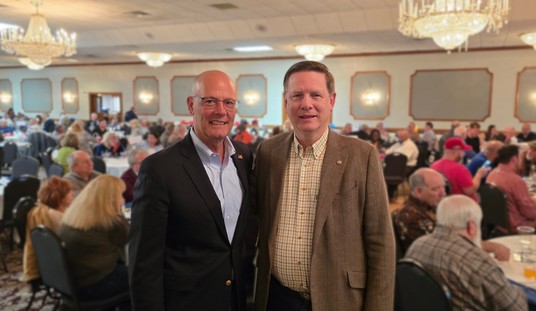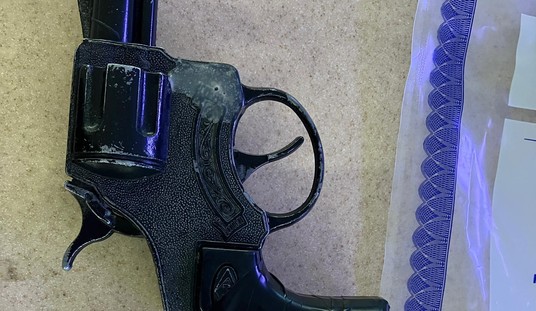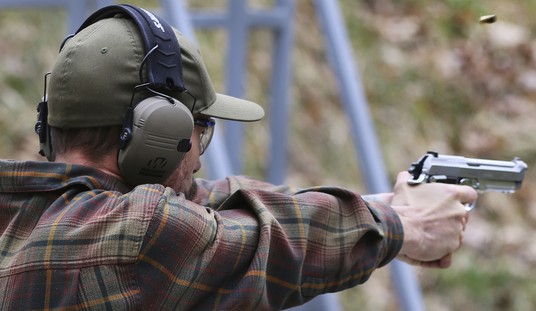For nearly two hours on Tuesday, the nine justices on the Supreme Court quizzed attorneys for the Department of Justice and Zachey Rahimi about the standard that can and should be used to prohibit individuals from possessing a firearm, with the Biden administration arguing that legislators at both the state and federal level have broad authority to deny Second Amendment rights to anyone they define as “non-law abiding” or “irresponsible.”
A majority of the justices appeared skeptical of that sweeping interpretation, at least to my non-lawyerly ears, but there also seemed to be virtually no support towards the idea that Zachey Rahimi should be free and clear to possess a firearm. Instead, much of the focus was on the DOJ’s contention that only “law-abiding” and “responsible” citizens possess the right to keep and bear arms. In this particular case, Solicitor General Elizabeth Prelogar based her arguments on the idea that Rahimi isn’t a responsible citizen, since he was not yet convicted of any crime when a judge imposed a domestic violence restraining order on him that prohibited from owning a firearm (Rahimi has since been charged with at least six shooting incidents in Texas during the time he was barred from possessing a firearm).
Chief Justice John Roberts mused that “responsible” is a very broad concept, and asked Prelogar if she was using that word as a synonym for “dangerous.” The Solicitor General agreed that was the case. The question then becomes how to define “dangerousness”, as well as who actually determines that. According to Prelogar, the legislative branch has the primary authority to do so and is vested with almost unchecked power to define it as broadly or narrowly as they see fit.
In fact, Prelogar went so far as to say that the absence of a longstanding or widespread tradition of a particular gun control regulation doesn’t mean that the regulation shouldn’t be allowed to stand, which stands in direct contradiction to the Supreme Court’s finding in Bruen. The Court said last year that the state doesn’t need to find an identical twin in history that compares to a recently enacted gun control law, but there must be some sort of analogue in order for a current restriction to withstand constitutional muster.
Prelogar also contended that the Bruen test can look beyond actual regulations in determining the constitutionality of a modern-day gun law, which attorney Mark W. Smith says would obliterate the Bruen test altogether.
#2A #rahimiregulation. DOJ is arguing you can look beyond REGULATIONS to justify modern gun laws. It is not a REGULATION ONLY TEST. Also, looking at the level of generality of historical analogues. DOJ wants to destroy the Bruen methodology and wants to justify all modern gun…
— Mark W. Smith/#2A Scholar (@fourboxesdiner) November 7, 2023
Smith says he doesn’t think today went well for the DOJ, and that “the argument went about as well as the 2A movement could have hoped”, while Second Amendment attorney Kostas Moros of Michel & Associates thinks SCOTUS will unanimously decide Rahimi can be barred from possessing a firearm but will split in numerous directions on the constitutionally appropriate method of doing so.
This is what will happen. I predict a 9-0 on the very basic question of whether Rahimi can be disarmed.
But there will be differing opinions below that basic question. Probably 4 or 5 conservatives wanting to set a dangerousness standard. Gorsuch sounds like he wants to keep it… https://t.co/JpHshwy01H
— Kostas Moros (@MorosKostas) November 7, 2023
Probably 4 or 5 conservatives wanting to set a dangerousness standard. Gorsuch sounds like he wants to keep it narrow, and maybe save that question for Range (others may join him in that if they decide to take up Range separately). The liberals will argue a broad as hell power of government to disarm. I loved how the Solicitor General shoved their “law abiding, responsible citizens” back in their face. Hopefully it teaches them a lesson about not using extra unnecessary words that government lawyers can abuse. Fortunately, they seemed eager to clarify that by “responsible”, they meant “not dangerous”.
Justice Barrett even said at one point that the references to “law-abiding” and “responsible” gun owners in the Heller and Bruen decisions were a reference to the individual plaintiffs in those cases, not a definitive statement about who, exactly, are “the people” who possess the right to keep and bear arms. It would be great if SCOTUS does indeed clarify that in its decision, but if the standard becomes “dangerousness” the Court is still going to have to specifically define what makes someone a danger or else anti-gun lawmakers are going to define that as broadly as possible in order to keep people from accessing their Second Amendment rights.
Moros says a dangerousness standard would be good for the Second Amendment but bad for Zachey Rahimi, since it would ostensibly allow for non-violent felons or misdemeanants like Bryan Range to regain his ability to own a gun. I think that’s definitely true in theory, but again, a lot will depend on the specific language that the majority uses in their decision. Give anti-gunners an opening to argue that a traffic ticket or even an arrest without formal charges is proof that someone is too dangerous to own a gun and they’ll be happy to abuse anything Rahimi might say, just as they’ve abused the Heller and Bruen decisions to fit their prohibitionist agenda.
Check out today’s Bearing Arms Cam & Co in the video window below for a more in-depth discussion about today’s oral arguments, as well as a look at a convicted felon most of us would consider to be “dangerous” who still got off with light punishment on a kidnapping charge, an act of armed self-defense in Los Angeles, and a good deed practiced by one South Carolina community.









Join the conversation as a VIP Member